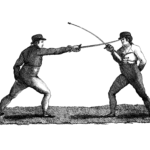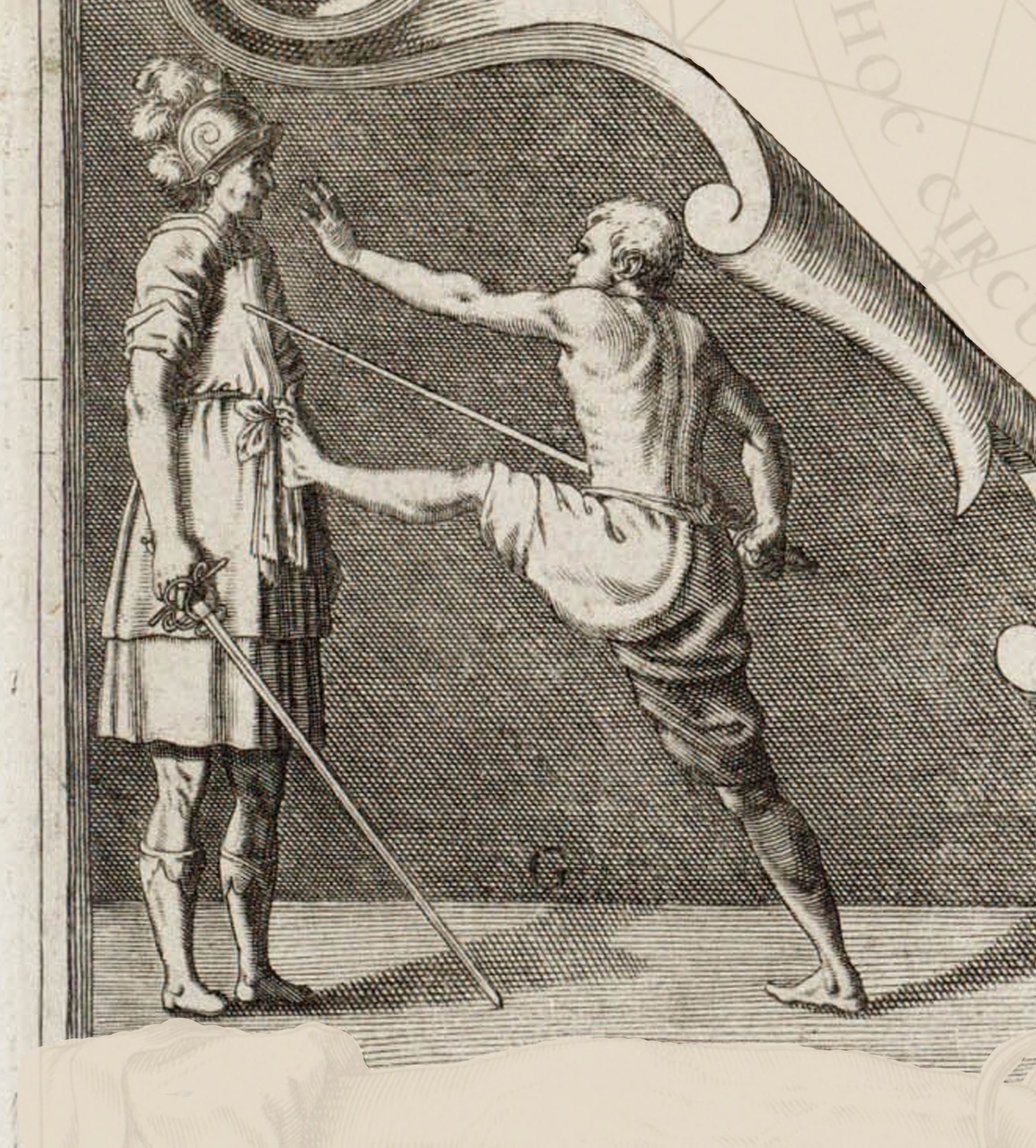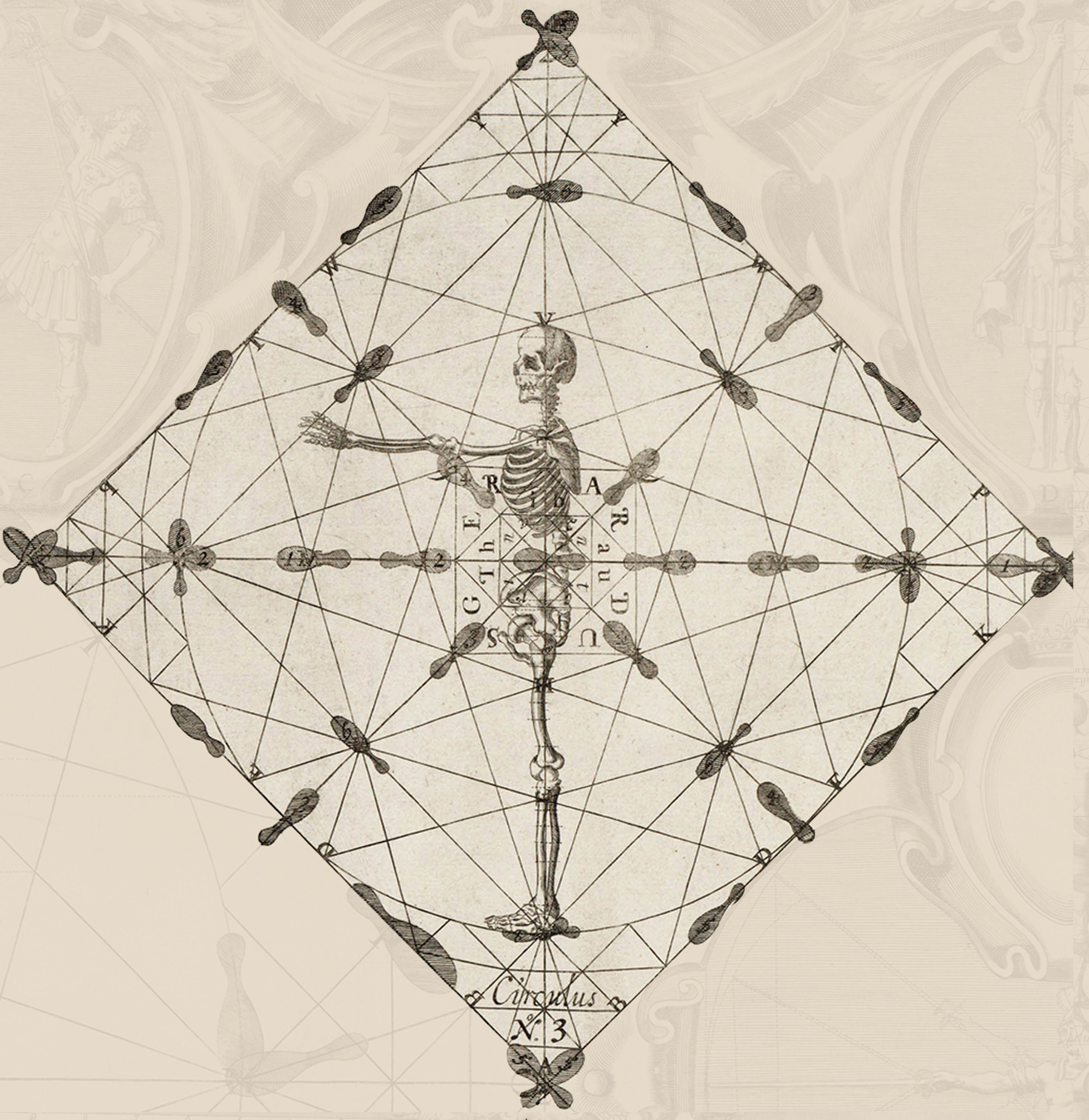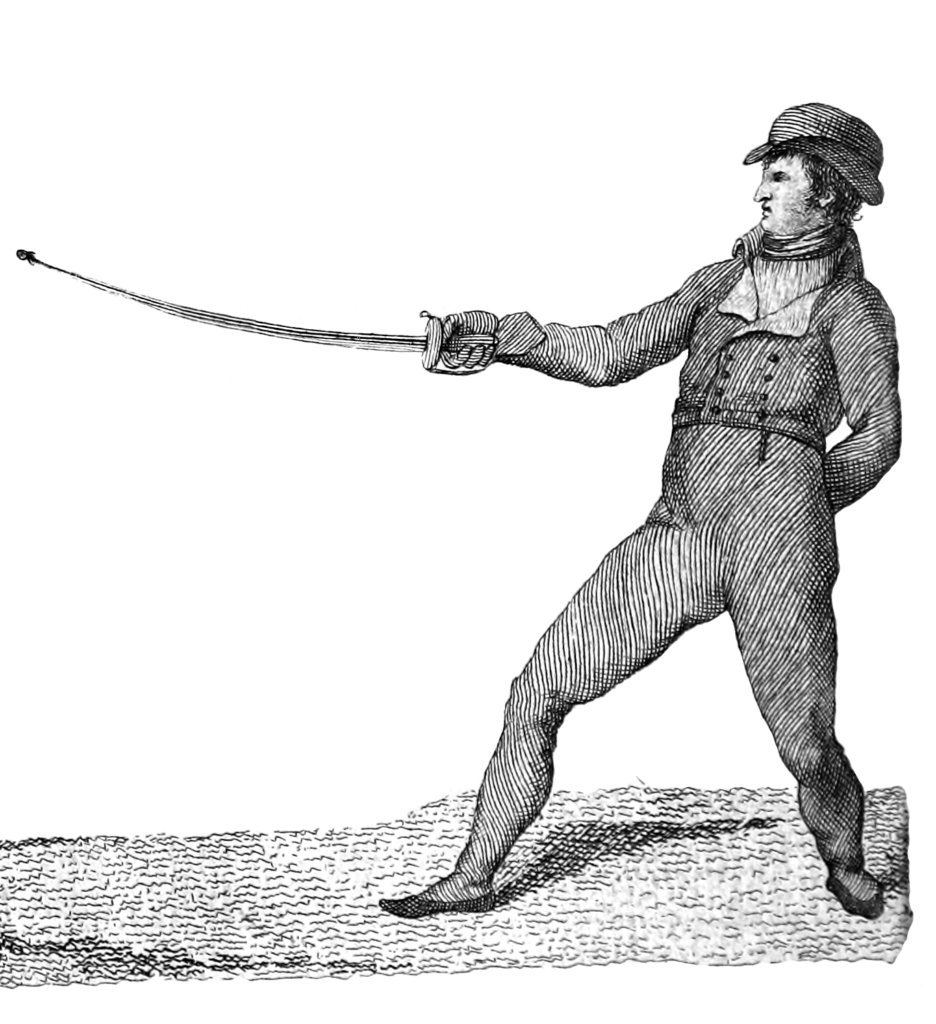156. For all of the shots that comprise this chapter, suppose that the enemy has taken the guard of fourth and that, having thrown a thrust to his outside, or third, he went to the removal of this same name to repair it. Likewise, I will say that the execution of these shots shall be addressed to the points, and in the order advertised in paragraph 96, these being those uncovered on the enemy in the removal of third with the repair of the thrust of first, which will serve as a final notice that I will omit the nuisance of repeating in each paragraph.
Thrust of Fourth from the Parry of Third and its Removal

157. Supposing that the enemy has just repaired with third the thrust thrown with a deep step, make yourself balance back a little and, loosening the wrist a little without removing the arm from the height and plane it is in, nor even the hand from the position of third, lower the point of the sabre more than the guard of the contrary and, from here, turn your hand in fourth, beating against the weak of the opponent’s sabre, and nail the point of your weapon at the same time under the right breast of your adversary, returning to balance with a movement of profile, with which requisites will be executed a thrust of low fourth with the necessary opposition (Plate 10, Figure 18, Letter A).

158. Remove this blow with the parry of low fourth (Plate 10, Letter B). Note that it will not be ineffectual to make a balance back at the time of the removal, considering the greater security in this shot. With the same object, I warn that it is an excellent opposition for this shot, to extend the arm in low fourth (§ 139). The points uncovered in low fourth are those mentioned in paragraph 93.
Counter Edge Blow to the Wrist on the Parry of Third, and its Removal

159. It is necessary that, in order to remove the thrown thrust, the contrary has done a removal of third in which the arm and weapon are opened outside of the right vertical. In this case, without need of anything else, lower the sabre below the guard using only the wrist, and put the back of it in the wrist or armpit of the enemy, making more than a middling effort upward, and replace it with much speed, cutting at the same time with the back edge (Plate 9, Figure 17, Letter C). Note that in order to perform this wound, it will be enough to make a balance forward during the time of the thrust, giving a blow on the ground with the sole of the foot and, with this, to obligate the enemy to do the removal of third to confirm it. But it does not prevent this execution of the previous one has been thrown deeply, since, in this case, it is carried out in the moment of recovery.

160. Remove this blow by making the point of the sabre form a portion of a circle, starting from the point where you are forming third, by passing it over the arm of the contrary and in front of his face, going down by his right vertical, ending in front of the collateral on this side, to the height of the middle of his thigh, raising the hand to the superior plane, for this and, staying on the line of the right vertical, take the full position of third with your arm somewhat bent, and moving the body to square. Making these movements united and prompt, you will have affected the removal that is called low fifth (Plate 9, Letter D), being a variation of fifth and second. This blow is well removed with low fourth (§ 139), but then there is no removal that is not without limitations and, as my intent is not to lose sight of the greater security, I prefer the low fifth, mindful of its generality. For when blows are thrown from below the guard in the parry of third, be it high, low, or regular, they will be perfectly removed with the parry stated.
Points that are Uncovered in Low Fifth
161. In this removal are uncovered the points noted in regular fifth (§ 102).
Thrust of Second Between the Weapons on the Parry of Third, and its Removal
162. After the thrown thrust is repaired with third, free the point inside with a short and light movement of the wrist and, without removing the arm from which it is at, nor the hand from the position of third, make the guard walk on the left vertical covering with it the left side, executing at the same time a wound of the point in the chest of the enemy, moving to profile. This is called second between the weapons.
163. This thrust, like the previous, can be repaired with fifth or low fourth
Diagonal Reverse to the Belly on Third and its Removal
164. To execute a diagonal reverse from the right hip to the left shoulder, it is necessary that the enemy has repaired, with an open third, the thrust that was thrown. In this case, lower the point of your sabre to put it below the opposing guard, without losing the position of third, look with the edge of the weapon to the beginning of the line and, from there, climb, cutting to the shoulder, belly, and chest of the enemy, not forgetting to recover promptly.
165. This blow is repaired with the same parries of fourth or low fifth which, like the previous ones, is formed on third and from below the guard.
Half Reverse to the Knee on Third, and its Removal
166. The last blow we have on this removal, which forms below the guard, is the diagonal half reverse to the knee, for which it is necessary that the enemy has repaired with third the thrust that was thrown. In virtue of this, free the point just by lowering it out of its guard, executing a diagonal cut to the knee, ensuring that the recovery occurs at the same time because this wound does not require the reach that is required by thrusts or cuts thrown to the head or trunk.
167. This blow cannot be removed without making the parry of second, but considering that it would have effect and a large movement to make, remove it by making a withdrawal of the right leg, with the other circumstances I have stated in paragraph 143 of the previous chapter in the same case to the inside.
























